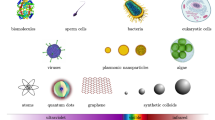Abstract
Optical throughput, namely the product of area times subtending solid, is a useful concept in calculations of light coupling to optical fibers. It is invariant through an optical system, thus providing a simple and elegant way to derive the maximum coupling efficiency between a light source and a fiber, regardless of intervening optics. Because throughput is proportional to the number of modes supported by an optical structure, it also yields the distribution of modal power within a fiber.
In this paper, we illustrate applications of throughput by calculating light coupling into fibers and mode distribution within.
Similar content being viewed by others
Author information
Authors and Affiliations
Rights and permissions
About this article
Cite this article
Hodara, H., Slemon, C. Throughput and coupling in optical fibers. Appl. Sci. Res. 41, 203–221 (1984). https://doi.org/10.1007/BF00382453
Issue Date:
DOI: https://doi.org/10.1007/BF00382453



